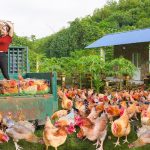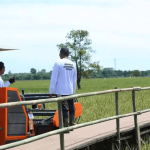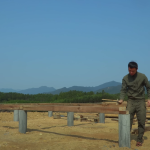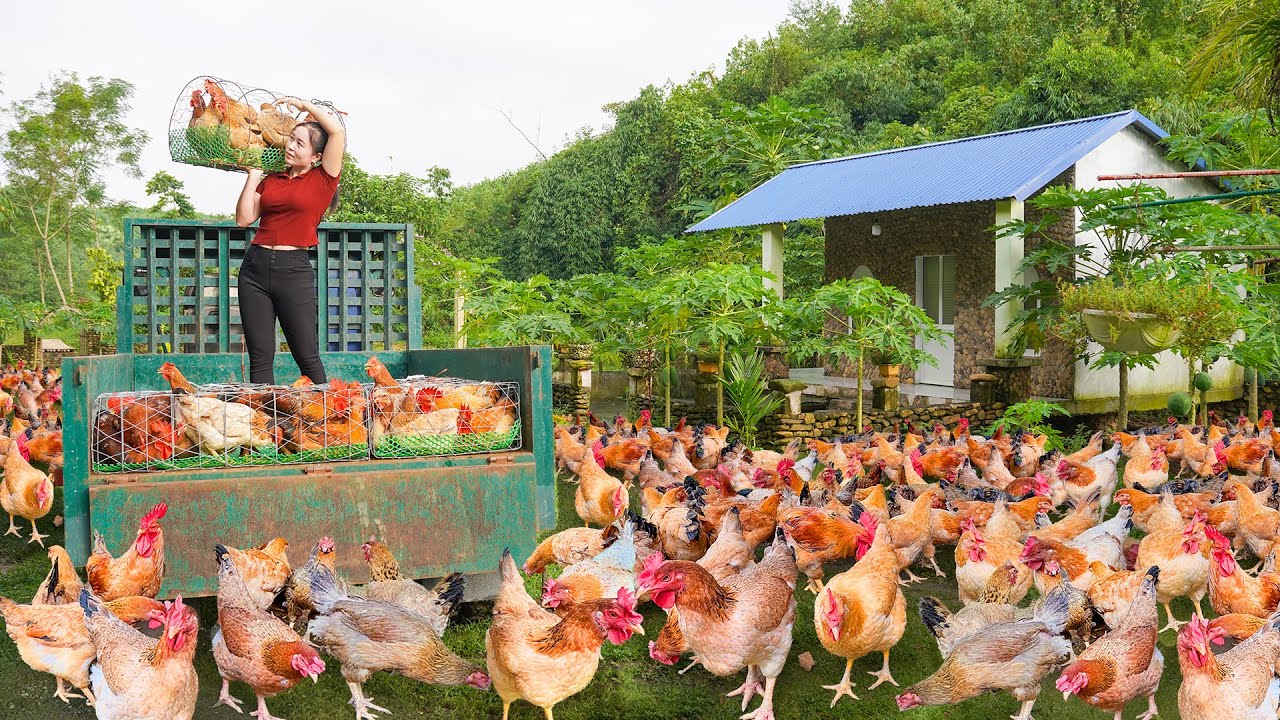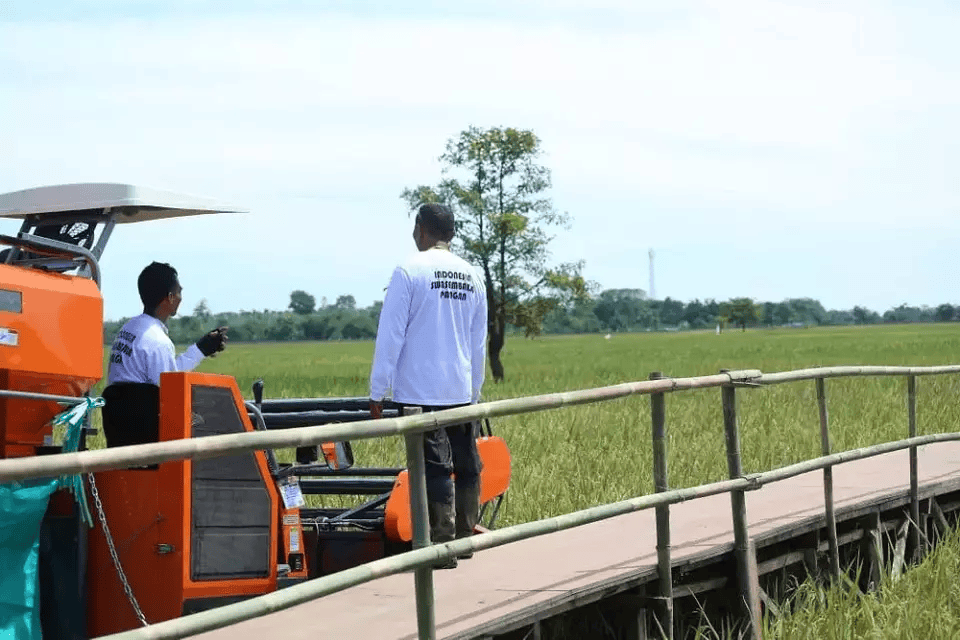Rooftop Gardening Business for Leasing Green Spaces for Sustainable Agriculture
Introduction to rooftop agroenterprise
In densifying urban milieus, the quest for arable terrain has given rise to vertical agronomy. Rooftop gardening transcends mere horticulture; it is a synergistic melding of architecture, ecology, and commerce. Visionary entrepreneurs who lease rooftop expanses convert idle rooftops into verdant micro-farms yielding verdurous produce, culinary herbs, and artisanal microgreens. This enterprise melds agroeconomic savvy with environmental stewardship, offering municipalities mitigated urban heat islands, enhanced stormwater retention, and enriched air quality. For the entrepreneur, leasing green spaces on edifices is a low–barrier entry into sustainable agriculture that dovetails with burgeoning consumer appetite for hyper-local, pesticide-free fare.
Understanding market dynamics
Before erecting trellises, one must decipher market topography. Contemporary consumers prize provenance, flavour nuance, and carbon footprint reduction. High-end restaurants covet rooftop-grown garnishes reflective of terroir. Wellness-oriented households seek microgreens teeming with phytonutrients. Urban developers and building proprietors view green roofs as value-adding amenities that elevate resale value and confer tax incentives under green infrastructure programs. Conducting granular market research surveys of nearby eateries, soil-to-table coops, and CSA clubs reveals pricing elasticities and demand contours. Mapping potential lessees alongside competitor rooftop farms informs strategic positioning.
Evaluating and selecting rooftop sites
Selecting an optimal rooftop demands rigorous scrutiny of structural weight capacities, solar aspect, and accessibility logistics.
Structural integrity assessment
Engage a qualified structural engineer to appraise load-bearing limits. Live loads from waterlogged substrates, planters, and irrigation systems can exceed 80 kilograms per square meter. Reinforcements or lightweight substrate alternatives may be necessary.
Environmental parameters
Assess sun-exposure hours, prevailing wind velocities, and proximity to exhaust vents. South-facing roofs yield maximal insolation, critical for solanaceous crops. Windbreak screens and shade sails modulate microclimate extremes, safeguarding tender seedlings.
Designing infrastructure and materials
Meticulous design underpins crop viability and labor efficiency. Infrastructure spans raised beds, container modules, and modular rack systems.
Substrate and containers
Opt for lightweight, recycled plastic or aerated concrete planters. Blend soilless substrates containing coconut coir, perlite, and composted green waste to achieve an optimal balance of water retention and aeration. Incorporate biochar amendments to bolster microbial consortia.
Protective measures
Install guardrails and parapet-mounted trellises to comply with safety regulations. Deploy anti-slip walkways and rainproof tool storage stations to ensure operational fluidity during inclement weather.
Water management systems
Prudent water stewardship sustains plant health and operational margins.
Rainwater harvesting
Collect rooftop run-off via gutter systems feeding into above-ground tanks. Employ self-cleaning leaf filters to inhibit debris accumulation. Rainwater reduces dependence on municipal supplies and qualifies for green certification points.
Drip irrigation networks
Implement pressure-compensating drip emitters spaced according to root zones. Integrate solenoid valves governed by moisture sensors and a central controller to automate irrigation cycles, trimming water usage by up to 60 percent.
Crop selection and rotation schemes
Edible greens and herbs expanded
For rooftop operations, selecting rapid-growth greens maximizes turnover and cash flow. Lettuce cultivars such as ‘Little Gem’, ‘Flashy Trout’s Back’, and ‘Red Sails’ mature in 28–35 days, enabling up to 10 harvests annually per bed. Basil varieties Genovese for pesto, Thai for zing, and Dark Opal for visual appeal reach harvest size in 30–40 days. Staggered sowing every 10–14 days yields continuous harvest windows. Incorporate cilantro (‘Santo’), arugula (‘Sylvetta’), and kale (‘Red Russian’) to diversify nutrient profiles and color palettes for CSA boxes or chef orders.
Implement intercropping by sowing fast-maturing radish or mustard between slower greens. Once radishes are pulled at 25 days, adjacent lettuces fill the vacated space, reducing fallow periods. Use successive successional sowing on the same bed: divide a 1 × 2 m bed into thirds, sowing each section two weeks apart for perpetual yield.
Fruit-bearing shrubs amplified
Container-grown dwarf blueberries (‘Sunshine Blue’, ‘Top Hat’) thrive in 40–50 L planters with ericaceous substrate (peat : pine bark : perlite, 2 : 1 : 1) maintained at pH 4.5–5.5. They fruit in June–July, yielding 1–1.5 kg per bush annually. Compact raspberry canes (‘Heritage’, ‘Autumn Bliss’) in 30 L grow bags deliver dual crops summer and primocane harvests in fall. Install support wires and prune post-harvest to stimulate new canes. Ensure 30 cm between plants for airflow.
Rotation and succession strategies
Rotate crop families every season to interrupt pathogen cycles. After harvesting a brassica crop, follow with a solanaceous relay such as cherry tomatoes in deep containers to prevent crucifer-downy mildew buildup. Implement green manure between heavy feeders: sow fast-growing buckwheat or phacelia for six weeks; then cut and mulch in place to enrich organic matter and recruit beneficial pollinators.
Utilize mobile containers to reposition beds after each cycle, balancing sunlight exposure and microclimate shifts. Label each container with sow dates, cultivar names, and expected harvest maintaining a digital log for yield-per-square-meter analyses. Over three years, this data informs whether to extend rotation length or trial new varietals adapted to rooftop stressors.
Advanced cultivation modalities
Hydroponic arrays in depth
Hydroponics on a roof demands precise nutrient and environmental control. The Nutrient Film Technique (NFT) employs 40 mm-wide channels tilted at 1 percent gradient, circulating solution at 1 L/min to bathe root mats in oxygen-rich film. Maintain solution EC between 1.2–1.8 mS/cm for greens; adjust to 2.0–2.4 mS/cm for fruiting crops. Change out the entire reservoir weekly to prevent nutrient imbalances and pathogen proliferation.
For leafy greens, Deep Water Culture (DWC) rafts on 20 cm-deep tanks allow high-density planting up to 30 plants/m². Monitor dissolved oxygen (> 6 mg/L) with inline aerators and back‐up pumps. Install inline UV sterilizers on recirculation loops to reduce Pythium outbreaks. In winter, insulate tanks and employ submersible heaters to keep root-zone at 18–20 °C, ensuring steady metabolic rates.
Consider vertical NFT racks to amplify footprint usage: five tiers of channels can quintuple output on the same roof area. Integrate full‐spectrum LED arrays on adjustable tracks, tuning photon flux density to 150–200 µmol m⁻² s⁻¹ during 16-hour photoperiods. Pair with CO₂ enrichment at 800 ppm in enclosed canopy tents to accelerate photosynthesis.
Aquaponic symbiosis detailed
Aquaponics unites tilapia or ornamental koi production with plant cultivation. Stock fish at 20 kg/m³ in a 1 000 L sump; feed at 1–2 percent body weight daily with 32 percent protein feed. Biofilters 160 L reactors filled with biocarriers convert ammonia (> 0.5 mg/L) to nitrate, maintaining fish health and supplying plants with nitrogen. Circulate water at 3 × system volume per hour to stabilize water quality.
Employ flood-and-drain grow beds filled with expanded clay pellets; beds should equal 50 percent of fish tank volume for balanced nutrient uptake. Schedule flood cycles every 30 minutes with 15-minute drain intervals. Monitor pH at 6.8–7.0 to satisfy both fish and plants, adjusting with potassium bicarbonate. Test water weekly for ammonia, nitrite (< 0.25 mg/L), and nitrate (< 200 mg/L).
Harvest tilapia at 500–600 g after six–nine months; sell fresh to local markets or transform into value-added fillets. Concurrently, greens such as lettuce and pak choi root directly into the beds, achieving 25 kg produce per fish-cycle. Post-harvest, allow fish tank fallow for one week; feed at 50 percent ration while plant biomass depletes residual nutrients, resetting for the next cycle.
Aeroponics and fogponics overview
For cutting-edge density, aeroponic towers atomize nutrient mists onto roots suspended in chambers. Misters operate on 5-second pulses every 5 minutes; droplet size of 20–50 µm ensures oxygenation. This method slashes water use by 95 percent versus field. Fogponics further refines by generating sub‐10 µm fog via ultrasonic transducers, ideal for herb seedlings and microgreens, with germination rates spiking above 95 percent.
Integrate sensors for real‐time monitoring root‐zone moisture, temperature, and dissolved oxygen linked to an IoT dashboard. Set alarms for pump failures or pH drift to preempt crop losses. Combine fogponic nurseries with adjacent hydroponic finishing beds for a seamless production pipeline: germinate seeds in fog chambers (5–7 days), then transplant robust seedlings into NFT channels for rapid maturation.
Crafting business model and leasing agreements
Pricing strategies
Develop multilayered fee structures that align landlord incentives with your profitability goals. Flat-rate leasing simplifies budgeting: set a base fee per square meter adjusted for amenities access, sunlight exposure, proximity to water hookups. To optimize yield-sharing, negotiate revenue-sharing tiers: for instance, a sliding scale where the landlord receives 5 percent of gross revenue up to $50 000, then 7 percent beyond. Introduce premium “sunbelt” plots commanding 15 percent surcharges for south-facing, unshaded zones. Conversely, offer budget “shadow slots” at reduced rates for shade-tolerant greens. Conduct sensitivity analysis on annual produce yields model worst-case frost impacts and best-case succulent harvests to stress-test your pricing schema and ensure positive cash flow across scenarios.
Contractual frameworks
Engage specialized agricultural counsel to draft master leases encompassing these pillars
1 Maintenance obligations
• Define routine horticultural tasks pest patrols, substrate replenishment and assign responsibilities between landlord and tenant
2 Indemnification and liability
• Embed clauses indemnifying landlords from crop-induced injuries (e.g., slipping on irrigation runoff) while tenants carry crop and public liability insurance
3 Termination triggers
• Specify exit rights for structural failures (roof leaks, safety defects) and tenant default (nonpayment, environmental violations)
4 Compliance warranties
• Include tenant guarantees to comply with local zoning, fire codes, and waterproofing warranties; require proof of annual structural inspections
5 Force majeure and crop loss
• Detail procedures for crop loss events extreme weather, pest plagues allocating risk and potential rent abatements
Attach annexes with template inspection checklists, crop-health reporting forms, and a digital dashboard link for real-time lease compliance monitoring.
Marketing channels and revenue streams
Direct to consumer models
Leverage an omnichannel approach. Launch an e-commerce portal with geotagged produce pages, allowing urban customers to track herb provenance to the meter. Integrate dynamic pricing for flash-sale “harvest-to-door” bundles. Employ tiered CSA subscriptions:
-
Standard CSA box (biweekly mixed greens)
-
Premium CSA box (weekly microgreens plus chef’s choice garnishes)
-
VIP “Rooftop Rendezvous” (includes monthly rooftop tour and tasting)
Use targeted email drip campaigns seeded with cultivation videos and seasonal recipe suggestions to nurture customer loyalty and reduce churn below 10 percent annually.
Partnerships with cafés and restaurants
Cultivate bespoke relationships with executive chefs by offering seasonal degustation menus centered on rooftop-exclusive ingredients. Propose trial contracts supplying micro-mesclun blends for 12 weeks, then extend to full calendar year engagements. Embed co-branding in menu listings: “Micro arugula by SkyHarvest”. Provide chefs with crop-timing forecasts aligned to menu cycles e.g., Persian basil peaks in June for summer cocktails. Support logistical precision with just-in-time harvest windows, ensuring morning pick-and-deliver protocols that preserve turgidity and flavor intensity.
Wholesale and corporate catering
Tap corporate wellness programs and office cafeterias craving hyper-local salad bars. Offer bulk-priced salad green racks with weekly replenishment. Bundle produce with “build-your-own” herb kits for onsite team-building workshops. Negotiate minimum annual purchase contracts securing revenue backstops even in off-peak growth months. Partner with event planners to supply rooftop-branded catering platters for rooftop yoga socials and green-roof soirées.
Environmental stewardship and sustainability metrics
Quantitative impact indicators
• Carbon sequestration measurement – calculate biomass-derived CO₂ equivalence based on substrate carbon content and above-ground plant mass
• Stormwater retention figures – monitor rooftop runoff reductions (liters retained per square meter per rainfall event)
• Thermal performance impacts – deploy infrared sensors to quantify reduced diurnal roof temperature flux (°C)
• Biodiversity indices – log beneficial insect counts (pollinator visitation rates per hour) and soil microbial respiration rates
Reporting and certifications
Compile an annual sustainability dossier including GIS-mapped performance layers, yield vs. footprint graphs, and third-party audit summaries. Pursue certifications such as LEED Green Roof Credit MR-2, Living Building Challenge Petal Certification, or Green Roof Certification by Green Roofs for Healthy Cities. Use these credentials in pitches to ESG-aligned investors and as leverage for municipal rebate programs.
Narrative of a rooftop farming innovator
Keiko Tanaka’s rooftop renaissance
When Keiko Tanaka inherited a derelict ninth-floor rooftop in Osaka she faced steel-reinforced concrete and decades of neglect. Undaunted, she retrofitted modular raised beds using reclaimed scaffolding beams, engineered a gravity-fed koi aquaponics system, and recruited local artisans to fabricate bespoke trellising from bamboo offcuts. Initial harvests were modest 200 kg of shiso microherbs but early revenue covered substrate upgrades. Within two years VerduraAerial Farms scaled to 450 kg of produce monthly, contracted by three Michelin-starred sushi bars. Meticulous nutrient-cycle logging allowed her to refine fish-to-plant ratios, driving a 15 percent yield uptick year-over-year. Keiko attributes success to blending traditional craft techniques with rigorous data analytics, forging a rooftop ecosystem that is both poetic and profitable.
Scaling operations and collaborative ecosystems
Strategic alliances with developers
Position your rooftop model as an amenity differential for new developments. Propose revenue-share frameworks where you install turnkey green infrastructure lightweight modular planters, IoT climate sensors, automated irrigation and split lease income with property owners. Provide digital building management integration to showcase live production dashboards in lobby displays, augmenting tenant retention metrics.
Modular licensing and turnkey packages
Develop “Rooftop in a Box” kits containing standardized bed modules, drip lines, edge barriers, and a SaaS-based farm management platform. License this intellectual property to emerging rooftop farmers under royalty agreements. Supply training protocols via interactive e-learning modules to maintain quality controls across decentralized locations.
Cooperative networks for resource optimization
Form a consortium of rooftop growers to aggregate bulk purchases of organic substrates, seeds, and farm inputs securing 20 percent cost savings. Host quarterly hackathons to share best practices, co-develop pest-watch algorithms, and pilot next-generation lightweight substrates.
Future outlook and emergent trends
Drone and sensor integration
Soon multispectral drones will map plant-health anomalies nightly, flagging nitrogen deficiencies or moisture stress before they manifest visibly. Automated UAV fleets will handle targeted foliar feeds, cutting labor by 30 percent.
AI-driven climate controls
Advanced neural-network controllers will predict rooftop microclimate shifts optimizing irrigation, shade sails, and fan schedules to sustain ideal transpiration rates and maximize photosynthetic efficiency.
Photovoltaic and agrivoltaics synergy
Lightweight bifacial photovoltaic membranes overcropping arrays will power your greenhouse controls while permitting 30 percent diffuse light penetration doubling land-use productivity between energy and food yields.
Urban policy incentives and agrocarbon credits
Municipalities will increasingly monetize urban agriculture through carbon credit schemes. Rooftop farms registered in agrocarbon registries can trade sequestration certificates, unlocking new revenue lines beyond produce sales.
Practical tips and tactical insights
-
Conduct a penny‐pinching pilot on 10 m² before scaling up
-
Invest in modular raised beds for flexible layout adjustments
-
Use end‐of‐row trellising for vining crops to multiply square‐meter productivity
-
Implement fortnightly pH and EC checks on hydroponic solutions
-
Rotate crop families quarterly to disrupt pest life cycles
-
Utilize companion planting marigolds deter nematodes among tomato plots
-
Maintain rigorous digital logs of yield, resource use, and sales for iterative refinement
-
Network with local architecture firms to identify rooftops during design phase
-
Leverage seasonal festivals harvest dinners, rooftop yoga to augment revenue
-
Pursue green building accreditations to unlock grants and tax abatements
Conclusion
Leasing urban rooftops for sustainable agriculture exemplifies a nexus of ecological innovation and entrepreneurial zeal. By harmonizing structural engineering, cutting-edge cultivation methodologies, and savvy market strategies, visionary operators can generate robust returns while mitigating environmental stressors. Rooftop farming is not a fleeting fad but a durable paradigm offering verdant proof that cities can feed themselves, carbon footprints can shrink, and communities can flourish in the skyward soil of tomorrow.
